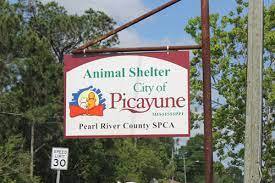Shaw Homestead highlight of second seminar on “old times”
Published 12:31 am Sunday, April 3, 2011
When Hugo Shaw asked his future wife, Mary, to marry him in the early 1940s, he warned her that he planned to “go back to the country,” back to the old way of living, back to the basics.
Said Mary Shaw later, to researchers compiling the history of the old pioneer homestead three miles east of Old Barth a quarter mile from the Wolf River:
“When Hugo asked me to marry him, he said, ‘Let me tell you one thing, I intend to go back to the country.’ And I knew that, though I was a city girl. But I was raised Catholic, and I intended to keep my vows no matter what, and I stayed. And it was hard, but I overcame it all.”
Mary Shaw was in for a rude awakening, though. She had been reared in New Orleans, was used to modern conveniences such as bathrooms, hot and cold running water, and stores stocked with all kinds of food.
When she reached the Shaw Homestead near Barth as a new bride in the early 1940s, she stepped back into a culture that had not changed for more than 100 years.
There was no electricity, no running water; the only hot water was warmed in a catch basin attached to the wood stove; and there was the never-ending daily chores of raising your own food, tending sheep on what was essentially a sheep station in the boondocks, canning your own food, raising that food, preparing the meat products, daily washing clothes by hand, and much more.
The Shaws had chickens that rooted up the grass in the yard to catch insects. The Shaws ate the chickens and their eggs. There were hogs, sheep and cattle running on what was then a “free range” in the woods, and the livestock ate the grass, roots and acorns, and the Shaws harvested and ate the livestock. They supplemented that by harvesting wild game such as turkeys and deer.
The only cash crop they raised was wool sheared from the sheep, which they sold in Poplarville to raise cash.
They raised a small garden for produce, gathered fruit from fruit and nut trees and harvested the meat from the livestock. Each winter they killed and rendered the hogs, from which they used everything but the squeal. The Rev. Arthur Hugo Shaw, Mary’s son, said that he at one time saw nine rendered hogs hanging in the smokehouse. The smokehouse is still there.
The outbuildings — the kitchen, jar and canning crib, corn crib, an old building used as a school and the smokehouse — were constructed separate from the house because if one caught fire it would not spread to other buildings.
Larger fields further away from the house were worked to grow corn to fatten livestock and to raise sugar cane for making syrup.
On Saturday, officials with the Land Trust and MSU’s Gulf Coast Community Design Studio gave attendees to the second of three seminar-type presentations at the old Shaw Homestead an overview of what life was like when the homestead was in full-operation as a sheep station and self-sufficient homestead.
The old log cabin was constructed in the late 1800s and is a representation of the old dogtrot style pioneer cabin. The Land Trust acquired it and the property from Shaw heirs in 2007. It had been lived in from the 1880s to 1969, when it was abandoned by Mary Shaw, the last to live in it, right after Hurricane Camille.
It was vacant from 1969 until the Trust acquired it and began refurbishing it with grant funds.
Those making presentations at the event were Jesse Zenor, Britton Jones and Kristen Zeiber, all with the Design Studio, which aids the Land Trust in its efforts to restore the homestead to its original conditions.
A final upcoming event is scheduled for Saturday, April 30, at the Homestead at 10 a.m. A demonstration of sheep shearing and a presentation of Livestock and Open Range will be presented.
Mary Shaw is still alive. She lives in Wiggins with her daughter Sheila, and son-in-law Michael Cruthird, brother to Picayune attorney Gerald Cruthird.
She is 87 years old.



